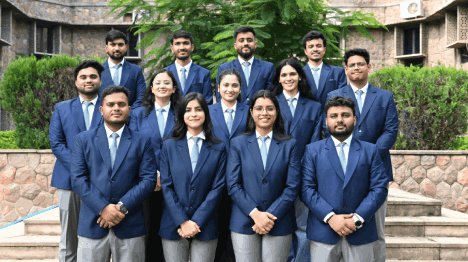- About Us
- Academics
Schools
Programs
General Information
- Faculty
The faculty members and researchers working at IIHMR University come from varied backgrounds including, but not limited to medicine, public health, management, economics, statistics, demography, human geography, social and behavioral sciences, rural development and pharmaceuticals.
- Admissions
- Research
.Publications & Journal
- Executive Education
- Training
- Placements
- Ph.D Result 2025
- Fee Payment
- NAAC
- IQAC
- NIRF
- Webinars
- About Us
- About IIHMR University
- Board of Management
- Academic Council
- Board of Studies
- Research Board
- Institutional Review Board
- Finance & Audit Committee
- Departmental Research Committee
- Chairperson's Message
- President's Message
- IIHMR University Act
- Infrastructure
- Collaboration
- Ranking
- Board of Studies (School of Digital Health)
- Awards & Accolades
- Academics
- Institute of Health Management Research
- School of Pharmaceutical Management
- School of Development Studies
- School of Digital Health
- SD Gupta School of Public Health
- MBA (Hospital and Health Management)
- MBA (Pharmaceutical Management)
- MBA (Development Management)
- MBA (Healthcare Analytics)
- Master of Public Health
- Student Manual – Cohort 9 (2021-2023)
- Master of Public Health (Cooperative programme with Johns Hopkins University)
- Ph. D.
- MBA CSR & ESG Management (Executive)
- MBA Sustainable Business Management (Executive)
- Common Information for all the Programs
- Academic Calendar
- Student Handbook 2020-21
- Committees
- Policies
- Annual Exam Calendar
- Library
- Faculty
- Admissions
- Research
- Executive Education
- Training
- Placements
- Alumni
- Events
- Job Openings
- Contact
- Research
Baseline survey for Sure Start project in Uttar Pradesh
Agency : PATH India, New Delhi
In order to improve the maternal and newborn health (MNH) in rural Uttar Pradesh, PATH India had undertaken the study namely Sure Start. The objective of the study was to carry out the baseline evaluation of MNH to develop an understanding of the ground situation as well as to evolve benchmark to assess outcome of interventions. Both quantitative as well as qualitative data were collected under the project. A total of 14000 eligible women in the reproductive age groups were interviewed from 700 villages in seven districts of eastern part of Uttar Pradesh. The information sought from them were on socio-economic characteristics, pre-natal, natal, and post-natal care practices, awareness and participation in socio-economic development activities in the villages. The qualitative data were collected from the different stakeholders, such as community health providers, community leaders, NGOs functionaries etc.
The project was successfully completed in the year 2008-2009. The final report of all the seven districts, namely Balrampur, Basti, Gorakhpur, Hardoi, Rae Bareli, Jaunpur, and Kanpur Dehat and the combined report for the state of Uttar Pradesh were prepared and submitted to the PATH India, New Delhi.
End Stage Renal Disease (ESRD) is a life threatening condition which is closely associated with diabetes and heart disease. Due to high and rising prevalence of these diseases in India, incidences of renal failure are on rise. It is estimated that in India more than 100,000 persons suffer from ESRD each year. There is a general lack of awareness of the disease, its treatment options, inadequate access to care and, above all, affordability in the society. Direct costs of HD and PD are easily available, but currently there are no studies in India that have analyzed the direct and indirect costs of the two therapies over the lifetime of individuals. The unit costs of each method, as well as the personal costs are important pieces of information, not only for patients, but also for policymakers, both in and outside the government who can make a difference to the current treatment-seeking scenario of ESRD



